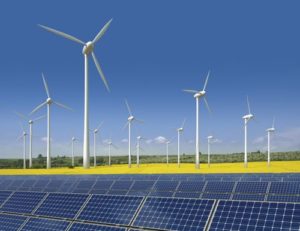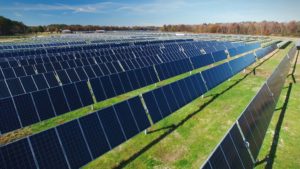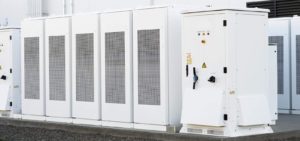Minimizing spikes in energy demand is one of the top priorities for many utilities around the globe. With market and regulatory pressure to deliver enough power for the smallest window of peak demand, utilities have prioritized customer demand reduction to mitigate costly investments in infrastructure expansion. To encourage reduced energy consumption from commercial & industrial customers during these peak times utilities offer special pricing packages, create tiered time-of-use pricing, implement demand response programs, and incentivize energy shifting and efficiency enabling technologies.
Alternative energy generation, particularly wind and solar, have been growing at an increasing rate and have helped alleviate some of the demand challenges. An obvious benefit of solar is that hours of solar collection often overlap with high demand periods. But, one limitation to these alternative energy sources is the intermittent nature of the power supply which then requires a back-up power source. Secondly, when enough of these renewables are online alleviating the typical peak demand periods they inadvertently cause a new peak demand period on the grid when the wind stops blowing or the sun goes down (see California’s growing “Duck Curve”).
Figure 1, Wind Power Stations
The Achilles’ Heel of renewable energy sources and potentially the solution to the broader problem of demand spikes is energy storage. By reliably storing enough energy during low consumption periods and deploying that energy during high consumption periods, power generation levels could be flattened and predictable. Enter the massive influx of investment in storage technologies, particularly batteries.
Even as battery technology advances, there are a handful of energy-intensive industries that batteries are unable to economically power for extended periods of time. One of these is the cold storage industry comprised of frozen food warehouses that range from 10,000 to 200,000+ square feet and grocery and restaurant walk-in freezers from 100 to 1,000+ square feet. There are over 2,200 cold storage frozen warehouses plus almost 40,000 supermarkets and over 620,000 restaurants with walk-in freezers in the US alone.
Maintaining stable sub-freezing temperatures around the clock requires massive amounts of energy to run their refrigeration equipment. Because of this, cold storage operations have the highest energy demand per cubic foot of any industrial category and are the third highest commercial energy consuming category, consuming over $30 billion USD of power every year.
Despite the huge amount of potential demand reduction and load shift the industry represents, and the millions of square feet of rooftop space, the industry is relatively slow to adopt solar. Partially because these facilities must run refrigeration equipment 24/7 to protect their inventory of frozen food. Also, despite the massive amount of roof space, most of these energy-intensive facilities cannot be fully powered by solar without additional real estate and solar panels.
Figure 2, Solar Panel Stations
Now there is an alternative storage technology, Thermal Energy Storage (TES) from Viking Cold Solutions, that can hold enough energy to provide up to 12 hours of load shed for typical freezer scenarios, a four times longer discharge duration than lithium-ion storage. TES systems alone save cold storage operators 20 to 35% on energy costs. When paired with solar generation, TES can save even more and address alternative energy’s shifts in demand (Duck Curve) and intermittent nature (Case Study: Pairing PV & TES in a CA Cold Storage Facility – Saved 39% on annual energy costs).
This alternative storage technology makes investment in solar or other renewables much more attractive.
The behind-the-meter TES systems consist of phase change material (PCM), intelligent controls, and 24/7 remote monitoring & reporting software that easily install and run in tandem with the cold storage facilities’ existing refrigeration, control, and racking systems.
Figure 3, Thermal Storage Unit


